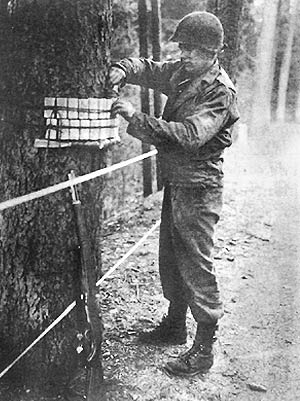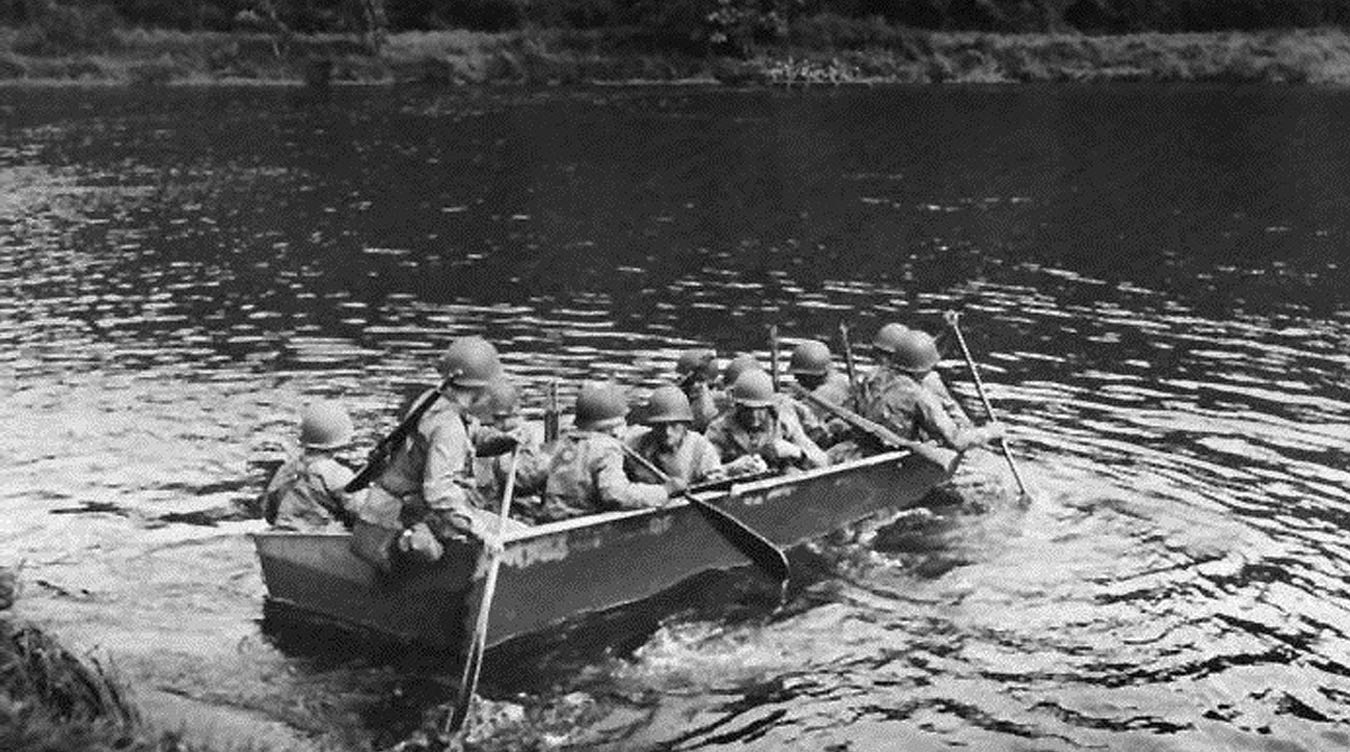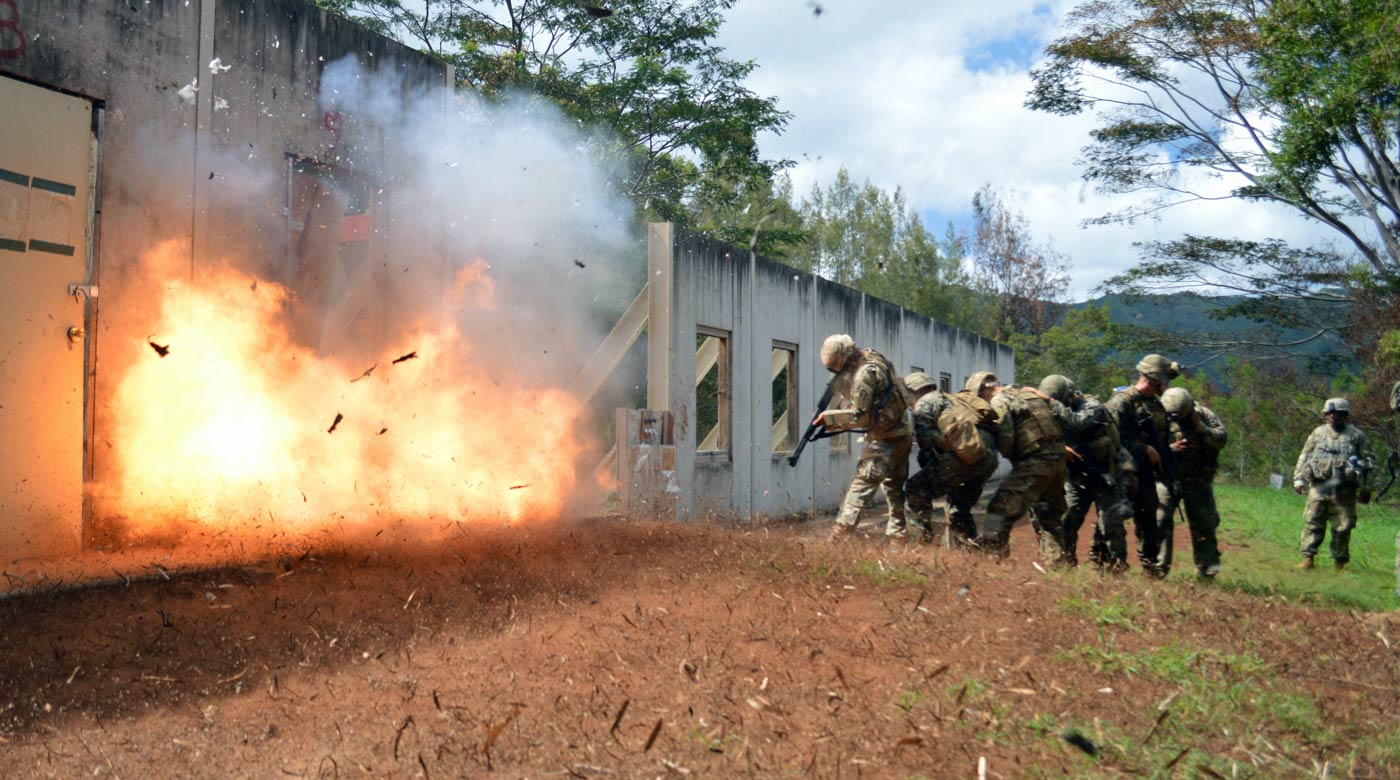HISTORY
Historical origins of Sapping
A sapper or combat engineer is a combatant soldier who performs a wide variety of combat engineering duties; typically including, but not limited to, bridge-building, laying or clearing minefields, demolitions, field defenses, general construction and building, as well as road and airfield construction and repair. They are also trained to serve as infantry when needed in both defensive and offensive operations and is fully involved in modern counter-insurgency operations.
Derived from the French word "sappe" — a derivation of the archaic French word for spade — the name became connected with military engineers who would dig covered trenches that allowed them to approach the walls of a fort that was under siege. The English word "sap" was used in a military sense as early as 1591 by an English ambassador to the French court who was reporting on the siege of Rouen during the French Wars of Religion.
Sixteenth-century military commanders discovered that they could dig trenches or tunnels to the walls of a fort and place large explosive charges that would destroy the fort’s walls.  As heavy bronze and cast-iron artillery pieces were developed in Europe, commanders gradually began using trenches to bring their big guns within range of the besieged fort without exposing them to direct fire from the emplaced batteries of the fort. The trenches used for advancing artillery were called saps, and the men who dug them became known as sappers.
As heavy bronze and cast-iron artillery pieces were developed in Europe, commanders gradually began using trenches to bring their big guns within range of the besieged fort without exposing them to direct fire from the emplaced batteries of the fort. The trenches used for advancing artillery were called saps, and the men who dug them became known as sappers.
Sappers in the U.S. Army
In the modern American Army, the Sapper, commonly referred to as combat engineer, supports the front-line infantry. Sappers install portable bridges, tank traps and other construction that provides tactical support; they build major support facilities such as supply roads, fuel depots, and airports; and additional tasks such as the disarming and disposal of mines and unexploded ordnance. Sappers have supported the front-line infantry in every war in American history.
 During the American Revolution, the Continental Congress named the French engineer officer Louis Duportail as commandant of the Continental Army's Corps of Engineers. Drawing on his French experience, Duportail in 1778 proposed and Congress authorized the creation of Sapper companies to provide experience in military engineering to American Soldiers and officers. The American companies of Sappers were organized in 1780 and served under engineer direction until 1783.
During the American Revolution, the Continental Congress named the French engineer officer Louis Duportail as commandant of the Continental Army's Corps of Engineers. Drawing on his French experience, Duportail in 1778 proposed and Congress authorized the creation of Sapper companies to provide experience in military engineering to American Soldiers and officers. The American companies of Sappers were organized in 1780 and served under engineer direction until 1783.
Duportail participated in fortifications planning from Boston to Charleston and helped Gen. Washington evolve the primarily defensive military strategy that wore down the British Army. Duportail also directed the construction of siegeworks at Yorktown, site of the decisive American victory in the Revolutionary War.
During the Civil War, Army engineers built pontoon and railroad bridges, constructed forts and batteries, demolished enemy supply lines and conducted siege warfare. In December 1862 Union Army engineers laid six pontoon bridges across the Rappahannock River, under devastating fire from Confederate sharpshooters, in support of the Union attack on Fredericksburg, Virginia.
Army engineers placed floating and later fixed bridges across the rivers of Italy, France, and Germany, supporting hotly contested crossings of the Rapido, Roer and Rhine rivers during World War II. Engineer troops prepared and developed beaches for assault landings, both in Europe and the Pacific. On the beaches of Normandy, engineer troops operating under heavy enemy fire, cleared lanes for landing craft by destroying the mine-bearing steel structures that the Germans had implanted in the intertidal zone and bulldozed roads up the narrow draws through the cliffs lining the beaches. During the Battle of the Bulge, quick engineer actions destroyed critical bridges in the path of advancing German forces, slowing and diverting them while Allied forces regrouped.
In recognition of the achievements of combat engineers, Army Chief of Staff General Peter Schoomaker authorized the wear of the Sapper tab as a military badge on June 28, 2004. Soldiers do not necessarily need to hold the combat engineer military occupational specialty to be awarded the Sapper tab but they must have graduated from the Sapper Leader Course operated by the U.S. Army Engineer School at Fort Leonard Wood, Missouri. Currently the Army only authorizes four elite service tabs for wear on the uniform — the Special Forces tab, the Ranger tab, the President's Hundred Tab and the Sapper Tab.
Featured Image - World War II Engineers

History of the Sapper Leader Course
The Sapper Leader Course was designed to train light engineer leaders in the aspects of airborne, air assault, mountain and light infantry tactics to form a more cohesive maneuver element. It was modeled after the infantry's "Light Leader Course", hosted at Fort Benning, Georgia, and still holds close to the same format to this day.
The course's design began in 1982, and continued until its inception in 1985. The validation class began May 12, 1985 and ended June 14, 1985, graduating the first 18 Sapper Leaders. The first class was the foundation for the building of the Sapper Leader Course of today. The initial course cadre consisted of combat engineers, infantry and Special Forces Soldiers, implementing the most diverse conventional Army curriculum of its time.
In December 1986, the Sapper Leader Course undertook the daunting task of executing a Mobile Training Team Class at Fort A.P. Hill, Virginia for the 229th Engineer Battalion of the Virgnia Army National Guard. The course would take place over six consecutive weekend training cycles and the unit's two-week annual training. The guest speaker for the graduation of this class was retired Lt. Gen. David E. Grange Jr., whom the Best Ranger Competition is named after. Additionally, the Honorable John O. Marsh Jr., Secretary of the Army, attended the graduation signifying the gravity of this accomplishment. In 1992, the Course's Chief Instructor, then-Sgt. 1st Class David Chandler, assumed the mission and wrote the Sapper Creed that is still used today. On June 6, 1999, the course had its first female graduate, then-Cadet Micala Hicks. At the time there was no military course of this nature to have female attendees let alone graduates. The Sapper Leader Course is the first tab producing school to have female graduates.
In 2017, the Sapper Training Detachment was re-designated as the Sapper Training Company (Provisional). In March 2018 the Sapper Training company adopted the aphorism "Earn the Right!" On December 7th, 2018 Sergeant Hailey Falk earned her right to be called a Sapper Leader as the first enlisted female graduate. The Combat Engineer MOS was not open to female soldiers until 2015, although many wanted to attend the course they did not meet the entrance requirements of the time. 326 females had attended by that date, but only 110 had Earned the Right.
Featured Image - Sapper Training

Background of the Best Sapper Competition
In 2005 the Engineer Regiment launched the inaugural Best Sapper Competition to showcase the Engineer Regiment's premier leadership course and the regiment's elite Sapper leaders. It has continued annually every year except 2013 and 2014 due to sequestration funding complications. The competition's concept is to not only determine the next "Best Sapper" team, but to challenge and test the service members' knowledge, physical prowess and mental fortitude. The competition showcases the Army's elite Soldiers in combat engineering military occupational specialties.
In 2018 the United States Army Engineer School unveiled the naming of the Best Sapper Competition as the Lieutenant General Robert B. Flowers Best Sapper Competition. This is in honor of Lt. Gen Flowers' contributions to the Sapper Leader Course.
FOllOW THE COMPETITION ON SOCIAL MEDIA
Follow the competitors on the official Facebook page or on other platforms, get updates and share with the hash tags #BestSapper and #BestSapperCompetition. Here are some quick links: